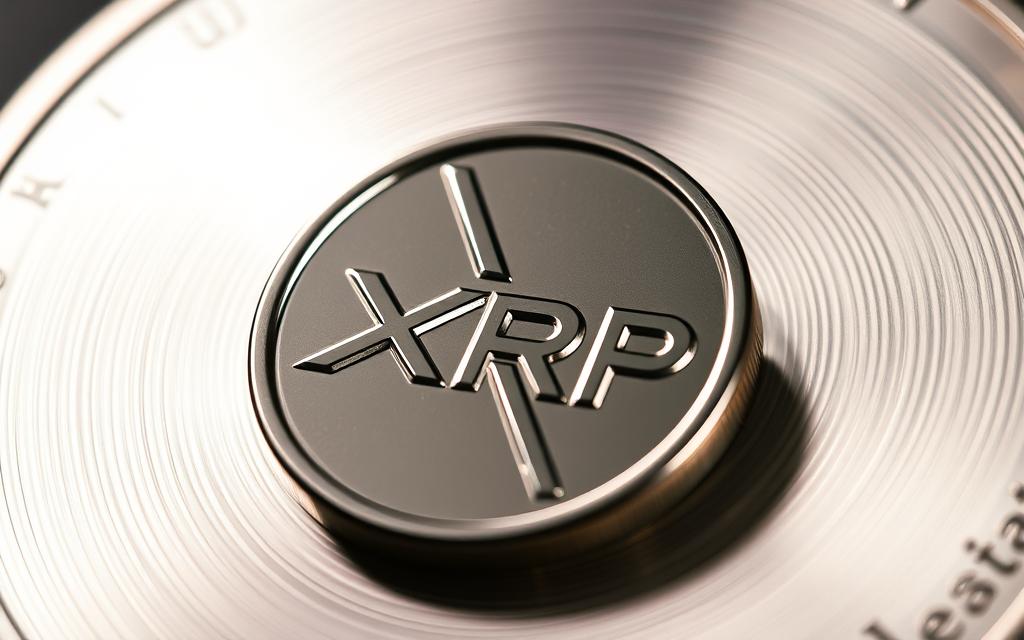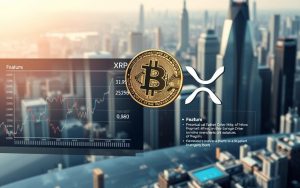Table of Contents
XRP ranks among the top digital assets by market capitalization, known for its fast transactions and banking integrations. Since 2017, it has gained traction for its utility in cross-border payments. Before diving in, understanding security and compliance is essential.
The process involves three core steps: setting up a wallet, selecting a trusted exchange, and transferring assets safely. Hardware wallets like Ledger offer robust protection against online threats. Always prioritize platforms with strong reputations and regulatory compliance.
For beginners, exploring cryptocurrency basics helps build foundational knowledge. Market volatility demands careful risk management—invest only what you can afford to lose.
Understanding XRP and Prerequisites for Purchase
Unlike many cryptocurrencies, XRP focuses on solving real-world payment inefficiencies. Developed by Ripple, it enables 3-5 second cross-border settlements, a game-changer for banks and payment providers. Its consistent top 5 market cap status since 2017 reflects sustained demand.
What Is XRP and Why Invest?
XRP acts as a bridge currency, reducing reliance on pre-funded accounts in foreign markets. Major institutions like Santander and Bank of America use RippleNet, leveraging XRP’s liquidity. This institutional trust sets it apart from smaller altcoins.
Key advantages include:
- Transaction speeds under 5 seconds
- Fees averaging $0.0002 per transfer
- High daily trading volume ($2B+)
Legal and Regional Considerations (U.S. Focus)
The SEC’s ongoing lawsuit against Ripple creates uncertainty, though XRP remains tradable on major platforms. New York’s BitLicense requirements restrict access on some exchanges. Always verify regional compliance before investing.
| Factor | XRP | Smaller Altcoins |
|---|---|---|
| Liquidity | High (Top 10 pairs) | Low (Limited markets) |
| Regulatory Clarity | Partial (Case pending) | Often unclear |
| Tax Reporting | Required (IRS guidance) | Varies by jurisdiction |
Consult services like TokenTax for accurate reporting. The 6-month T-bill rate often serves as a benchmark for risk assessment in volatile assets.
Choosing a Cryptocurrency Exchange to Buy XRP
U.S. investors have multiple reputable platforms to access XRP, each with distinct advantages. Prioritize exchanges with strong liquidity, regulatory compliance, and user-friendly interfaces. Security features like two-factor authentication (2FA) are non-negotiable.
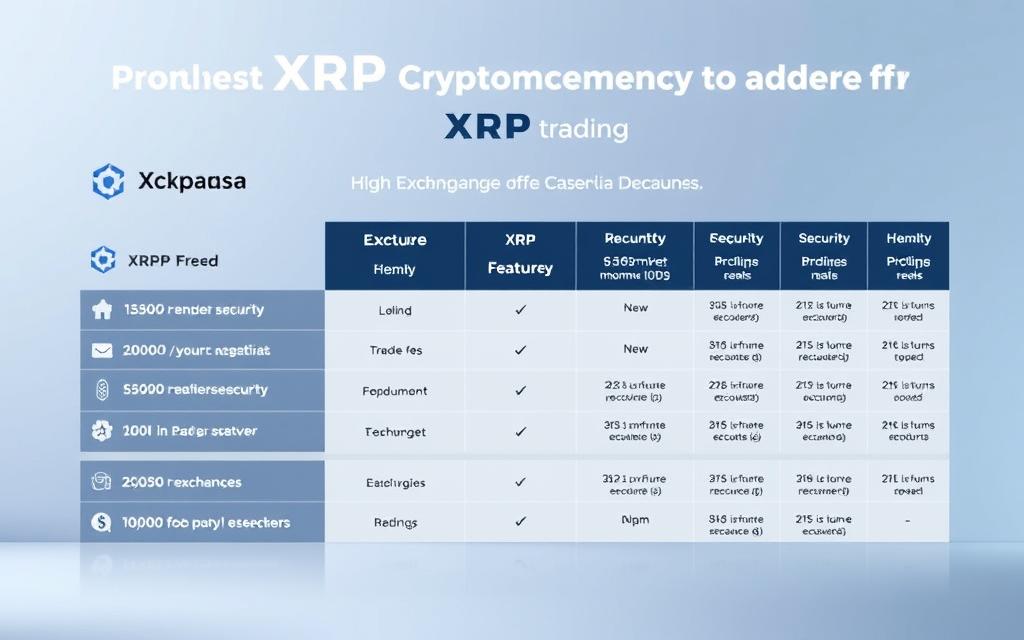
Top U.S.-Based Exchanges Supporting XRP
Kraken, Uphold, and BitStamp lead the market for XRP trading. Compare their features:
- Kraken: Low fees (0.16%-0.26%), advanced order types, and high liquidity.
- Uphold: Supports debit/credit card purchases (3.99% fee) and instant ACH transfers.
- BitStamp: Established since 2011, with 0.1% fees for high-volume traders.
Note: Some platforms, like Coinbase, use Apex Clearing—a third-party custodian with potential risks.
Account Creation and Verification
All U.S. exchanges require Know Your Customer (KYC) checks. Prepare these documents:
- Government-issued ID (passport or driver’s license).
- Proof of address (utility bill or bank statement).
- Social Security Number (SSN) for tax reporting.
Verification tiers affect trading limits. Basic accounts may cap daily withdrawals at $10,000. Higher tiers require additional documentation but unlock larger order sizes.
Pro Tip: Enable 2FA during setup for added security. Avoid exchanges blocking NY residents due to BitLicense restrictions.
| Exchange | Card Purchase Fees | ACH Transfer Fees |
|---|---|---|
| Kraken | 3.75% + €0.25 | 0.2% |
| Uphold | 3.99% | Free |
How to Buy XRP Crypto: Payment Methods
Payment flexibility is crucial when adding XRP to your portfolio—options range from instant card purchases to bank transfers. Each method affects speed, fees, and accessibility. Below, we break down the pros and cons.
Debit and Credit Card Purchases
Cards offer instant access to XRP but come with higher fees (3–5%). Major exchanges like Uphold and Kraken support Visa and Mastercard. Daily limits vary:
- $1,000 for basic accounts.
- Up to $25,000 for verified users.
Note: Foreign transaction fees may apply if your card issuer charges for USD conversions.
Bank Transfers and Alternatives
ACH transfers take 3–5 days but cost less (0.2–0.5%). Supported banks include Chase, Bank of America, and Wells Fargo. Partial purchases (e.g., $50 increments) let you dollar-cost average.
For USD holdings, consider FDIC-insured high-yield cash accounts on platforms like Uphold. These earn interest while you wait to trade.
| Method | Speed | Fees |
|---|---|---|
| Debit/Credit Card | Instant | 3.99% |
| ACH Transfer | 3–5 days | 0.5% |
Setting Up a Secure XRP Wallet
Securing your digital assets starts with choosing the right wallet. Proper storage ensures protection against hacks and unauthorized access. Two main options exist: hot wallets for convenience and cold wallets for maximum security.
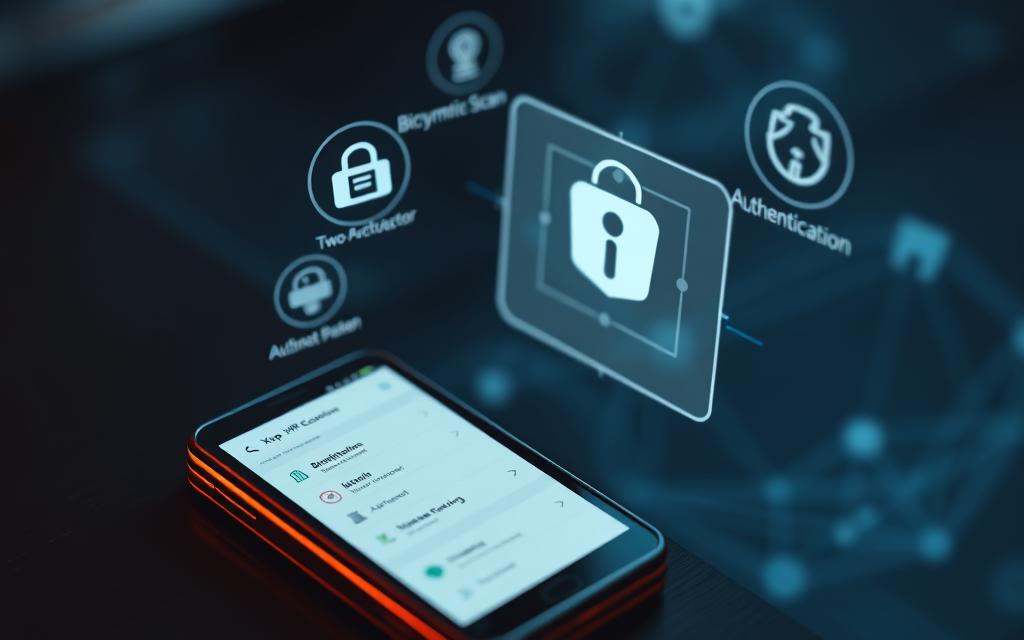
Types of Wallets: Hot vs. Cold Storage
Hot wallets like Coinbase or Exodus connect to the internet, enabling quick transactions. They’re ideal for frequent trading but vulnerable to online threats. Cold wallets, such as Ledger or Trezor, store assets offline, shielding them from cyberattacks.
| Feature | Hot Wallet | Cold Wallet |
|---|---|---|
| Accessibility | 24/7 via app/web | Physical device required |
| Security Level | Moderate | High (offline) |
| Best For | Daily trading | Long-term storage |
Step-by-Step Hardware Wallet Setup (Ledger Example)
Follow these steps to configure a Ledger Nano X:
- Download the Ledger Live app and connect your device via Bluetooth.
- Create an XRP account within the app.
- Write down your 24-word seed phrase on paper—*never* screenshot it.
- Set a PIN and enable anti-tamper features.
Compatible wallets include Ledger Nano S/X and Ellipal Titan. Always verify transactions on the device screen before approving.
- Warning: Store seed phrases in a fireproof safe. Losing them means losing access.
- Tip: Update firmware regularly to patch vulnerabilities.
Transferring XRP from Exchange to Wallet
Moving XRP to a personal wallet ensures full control over your assets. This process involves two critical steps: generating a wallet address and executing the transfer securely. Mistakes here can lead to permanent loss, so attention to detail is key.
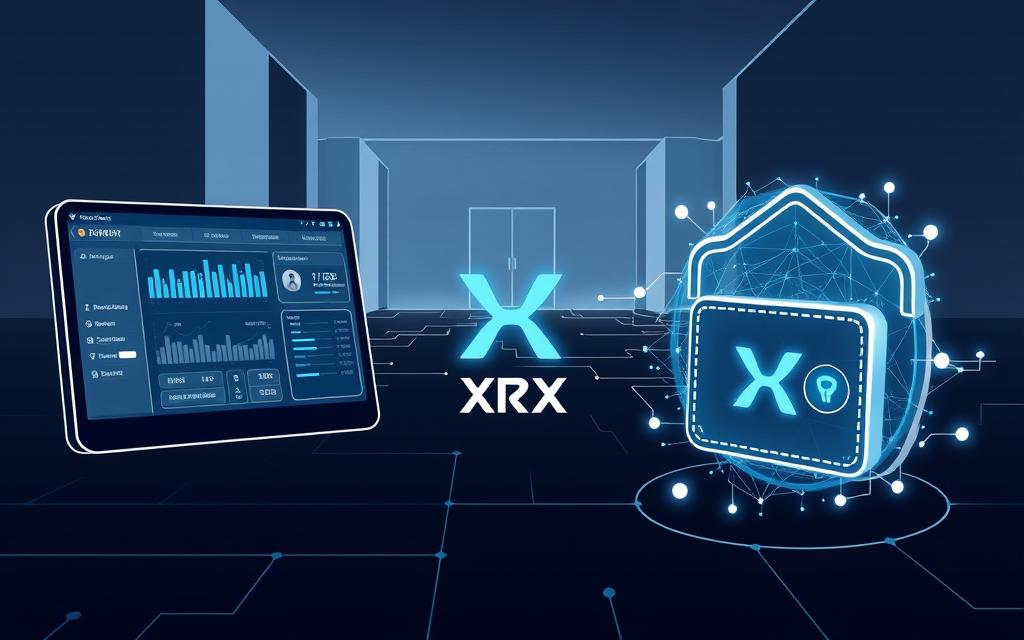
Generating a Wallet Address
Your wallet’s address acts like a bank account number. In Ledger Live, navigate to the XRP account and click “Receive.” A QR code appears for easy scanning. Always double-check the alphanumeric code matches your device display.
XRP requires a 20 XRP minimum balance in new wallets. This reserve is non-refundable but ensures wallet activation. Fees cost just 0.00001 XRP per transaction, making small test sends practical.
Executing the Transfer Safely
On your exchange, paste the wallet address or scan the QR code. Confirm these details before proceeding:
- Amount: Start with a small test transfer for large sums.
- Destination Tag: Required for exchanges (leave blank for personal wallets).
- Network: Ensure “XRP Ledger” is selected—wrong choices forfeit funds.
Track progress using Bithomp Explorer by entering your address. Common errors include expired QR codes or incorrect tags. If a transaction fails, verify the wallet supports XRP and has sufficient reserves.
Pro Tip: Bookmark your wallet address to avoid typos in future transfers. Never share your seed phrase—exchanges only need the public address.
Security and Risk Management
The 2022 FTX collapse underscores non-negotiable security practices for crypto holders. Protecting assets requires understanding threats like phishing and weak private keys. Proactive measures reduce exposure to scams and exchange failures.

Multi-Signature Wallets and Key Protection
Multi-sig wallet configurations require approvals from multiple devices. This adds a layer of security against single-point failures. For example, Ledger’s Shamir Backup splits seed phrases into encrypted shares.
Essential key practices:
- Store private keys offline in fireproof safes.
- *Never* digitize seed phrases—paper or metal backups only.
- Update hardware wallet firmware quarterly.
Recognizing and Avoiding Scams
Fraudsters exploit urgency. Common scams include:
- Fake Ledger Live sites stealing login credentials.
- SMS phishing (“Your wallet is compromised!”).
- Fake “recovery services” demanding fees.
For trading safety tips, review our guide on crypto asset protection.
| Risk | Prevention |
|---|---|
| Phishing | Bookmark official sites; enable 2FA |
| Malware | Use dedicated devices for crypto |
| IRS Audits | File Form 8949 for transactions |
Insurance options like Fireblocks cover institutional holdings, while Coinbase Custody offers $250M protection. Always verify network details before transferring assets.
Conclusion: Next Steps in Your XRP Investment Journey
Investing in digital assets requires careful planning and risk assessment. Prioritize security with cold storage, two-factor authentication, and phishing awareness. Diversify wisely—experts suggest limiting crypto exposure to 1-5% of your portfolio.
Explore advanced strategies like staking or liquidity providing to grow holdings. Stay updated on the SEC vs. Ripple case, as rulings could impact the market. Tools like XRP Ledger Explorer and Messari provide real-time data.
Consult financial professionals for tax optimization and compliance. Remember: “Not your keys, not your crypto.” The blockchain world evolves fast—stay informed and proactive.
FAQ
What makes XRP different from other cryptocurrencies?
XRP is designed for fast, low-cost cross-border payments. Unlike Bitcoin, it doesn’t rely on mining, making transactions quicker and more energy-efficient.
Can U.S. residents purchase XRP legally?
Yes, but only on exchanges that comply with SEC regulations. Platforms like Uphold and Kraken support XRP trading for U.S. users.
Which exchanges offer the lowest fees for buying XRP?
Binance.US and Coinbase often have competitive fees. Compare deposit methods—bank transfers usually cost less than debit/credit cards.
How long does account verification take on exchanges?
Typically 1–3 business days. Delays may occur if documents are unclear. Expedited verification isn’t usually available.
Is a hardware wallet necessary for storing XRP securely?
Highly recommended for long-term holdings. Ledger and Trezor provide offline storage, reducing hacking risks compared to exchange wallets.
What’s the minimum amount needed to start investing in XRP?
Most exchanges allow purchases as low as . Check platform-specific limits, especially for card payments.
Can I transfer XRP directly to another person’s wallet?
Yes. Enter their wallet address and the amount. Always verify the address first—transactions are irreversible.
How do I recover XRP if I lose my private keys?
Without keys, recovery is impossible. Write them on paper or use a metal backup. Never store keys digitally without encryption.
Are there taxes on XRP transactions in the U.S.?
Yes. The IRS treats cryptocurrency as property. Capital gains taxes apply when selling or trading XRP for profit.
What’s the fastest payment method to buy XRP instantly?
Debit/credit cards process within minutes. Bank transfers take 1–5 days but have lower fees.


